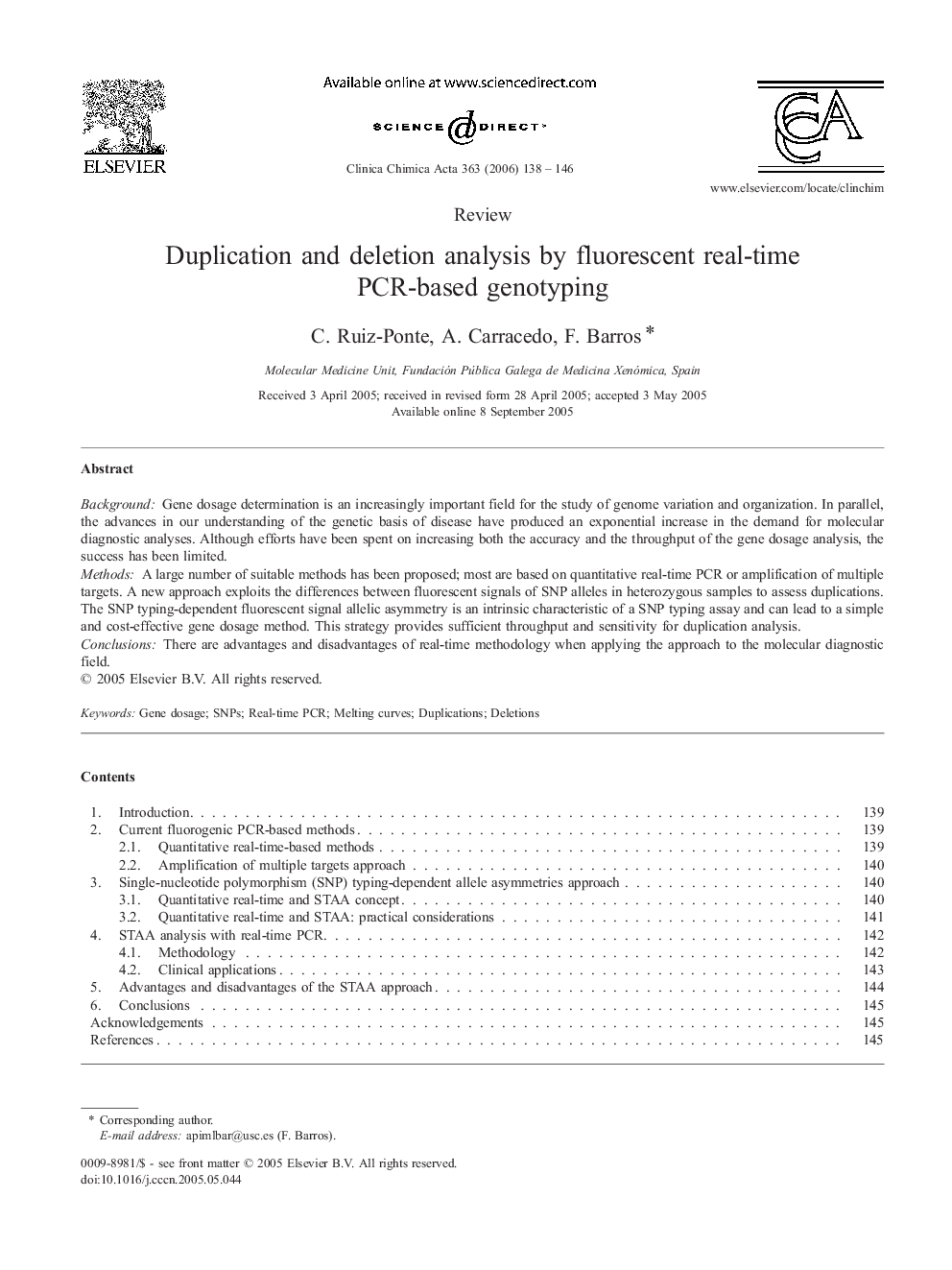| Article ID | Journal | Published Year | Pages | File Type |
|---|---|---|---|---|
| 1968300 | Clinica Chimica Acta | 2006 | 9 Pages |
BackgroundGene dosage determination is an increasingly important field for the study of genome variation and organization. In parallel, the advances in our understanding of the genetic basis of disease have produced an exponential increase in the demand for molecular diagnostic analyses. Although efforts have been spent on increasing both the accuracy and the throughput of the gene dosage analysis, the success has been limited.MethodsA large number of suitable methods has been proposed; most are based on quantitative real-time PCR or amplification of multiple targets. A new approach exploits the differences between fluorescent signals of SNP alleles in heterozygous samples to assess duplications. The SNP typing-dependent fluorescent signal allelic asymmetry is an intrinsic characteristic of a SNP typing assay and can lead to a simple and cost-effective gene dosage method. This strategy provides sufficient throughput and sensitivity for duplication analysis.ConclusionsThere are advantages and disadvantages of real-time methodology when applying the approach to the molecular diagnostic field.
